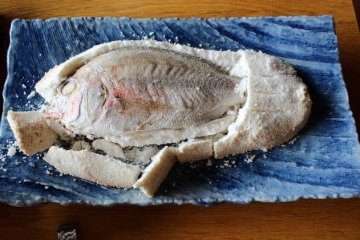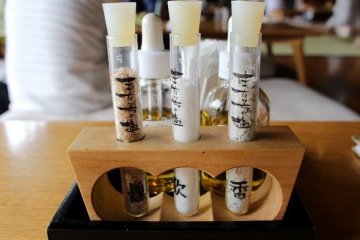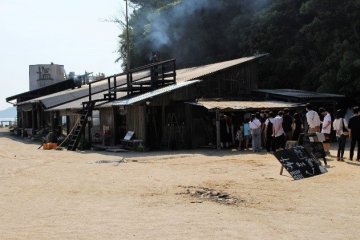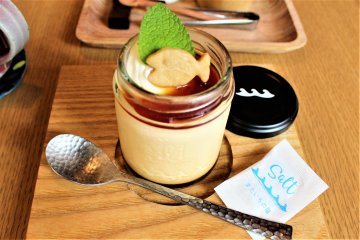When the fish-shaped chunk of salt is served at my table, I can smell the tang of the sea air. With some excitement, I insert my chopsticks into the crack in the salt-made container to remove the 'lid'. A fleshy grilled sea bream appears, and a casual lick of salt attached to my forefinger makes my eyes grow round. “Wow," I think to myself, "this is great.”
The restaurant Itaru stands in the middle of paddy fields on the Itoshima Peninsula – a 40-minute drive from the city of Fukuoka. The area, originally known for its beautiful beaches, is popular among summer holiday-goers. Recently, though, the local salt brand Mataichi has become a major reason for foodies and tourists to visit.

Itaru is operated by the producer of such quality salt and when I enter its feudal-style gate, it makes me feel as if I were visiting a samurai house. Inside, I find people already waiting. Lunch time has only just started. The first floor of the restaurant is tatami-matted and on each table is a set of test tube-like containers featuring three different kinds of salt.

I first sprinkle the brown salt on my appetizer salad with some olive oil. Crystalized and smoked, it goes well with the crispy lettuce. Another contains herbs and makes the vegetables feel even sweeter. The onigiri rice balls that come with tempura, the grilled fish, and a few of other small dishes do not betray my expectations. Itaru proves that salt completely changes the taste of rice balls. This JPY1900 lunch-set, however, is not the end of my experience with Mataichi salt.

A 30-minute refreshing drive along the coastline takes me a wooden factory situated at the western tip of the peninsula. Here, a cook, Shuichi Hirakawa, has been making mineral-rich salt here since 2000. Hirakawa went abroad to study cooking in his twenties. After returning to Japan, he found that the salt in Japan was all pretty much the same in taste and quality. Wanting something better, he then decided to make his own original high-quality salt.

While it was a slight let down to discover that the factory was closed to visitors the first Sunday after the government lifted its pandemic-related travel restrictions between regional boundaries, people were still coming all the way to visit. Their purpose? To sample Hirakawa's 'salt pudding'. This pudding with its sprinkle of salt, is becoming so popular that more than 1,000 servings of it are sold each day. Thick and creamy, the combination of sweet pudding and salt creates a flavour that I have never tasted before.

The area around the factory is like a café in nature with hammocks, a wooden deck as well as tables and chairs made of driftwood. However, it is the taste that remains in my memory, thanks to some incredible ingredients and a scenic view of the blue ocean making every scoop of the pudding a special one.

I receive a bonus on my way back to central Fukuoka - a mystical view of the sun setting between two rocks worshiped in Shinto. Satisfied with the good meal and pleasant coastal drives, I now know why people return to Itoshima time after time.

















